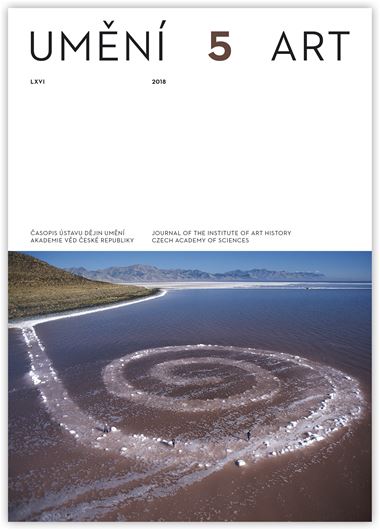Alena Kavčáková
Z korespondence F. V. Mokrého s účastníky VI. Mezinárodního kongresu pro kreslení a užitá umění v Praze — Galkou E. Scheyerovou, Josefem Albersem a Lucií Moholy-Nagyovou
The edition of part of the correspondence of painter and art professor F. V. Mokrý from the years 1928–1930 documents the efforts of this important representative of the movement for the modernisation of art education methods to develop contacts with the international art and art-education avantgarde, especially with personalities related to Bauhaus. The opportunity for a personal meeting with the people named above and for an attempt to increase respect for the modernist efforts of Czechoslovak art teachers in the international context was the VI. International Congress for Art Education, Drawing and Art Applied to Industry, held in Prague in 1928, of which Mokrý was the general secretary. Together with the interpretation of the content of the letters, the text therefore also focuses on the evaluation of the organisational and ideological sides of the Prague Congress, conceived with the support of government circles on the occasion of the celebration of the first ten years of the building of Czechoslovakia as an event documenting the progressive thinking of a world-oriented democratic country. In his commitment Mokrý appears as a typical representative of the generation of artists born at the close of the 19th century, opponents of national traditionalism who, in the period between the wars, were reaching a fundamental knowledge of creative solidarity with Bauhaus and primarily were striving from these positions to awaken the public interest in a modern lifestyle. When the popularity of functionalism reached a higher level in Czechoslovakia in the thirties of the 20th century than in the land of Bauhaus, this was certainly due to the activities of a number of almost unknown artists – progressive-minded professors of drawing, art teachers at junior secondary and secondary modern schools, who contributed to the high-quality education of Czechoslovak citizens through the cultivation of their sensibility to constructivism and functionalist objectivity.
Full-text in the Digital Library of the Czech Academy of Sciences:
https://kramerius.lib.cas.cz/uuid/uuid:9a360b49-e631-48d4-822d-2923516f7355
< back

